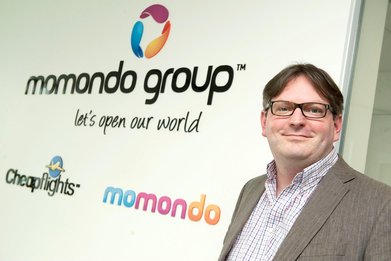How to use IT to drive customer benefits from big data and analytics
Working out how to leverage big data and analytics across your organisation so that the end user – the most important person in all this – actually benefits isn’t easy. EyeforTravel’s Ritesh Gupta talked to two senior IT executives from Carlson and momondo group to find out how they are approaching it.
IT executives, representing both suppliers and intermediaries across the travel industry, are working hard to ensure their internal processes and infrastructure is in the right shape. They are doing so because only then, can the power of big data and analytics be leveraged across the organisation to support problems that may crop up.
Storing data so that it is analytics-ready is crucial. In this context, many argue that IT will play an important role in ensuring that the information infrastructure is in place to run the analysis required to take advantage of big data.
Matthew Batchelor, Group Chief Technology Officer at Momondo Group believes big data is about how to extract pertinent facts and insights from large amounts of interrelated information. This then leads onto the realisation of hidden value for customer, users and, ultimately, the business. Spotting and making the most of trends – and delivering that information to users at the right time, in a way that is relevant to them is a complex business. But the prize, he believes, is significant. “This isn’t about buying large off-the-shelf packages – it’s about how you leverage and work with the insights, understanding and various different skillsets across your organisation,” he says. Quite simply, it is worth to consider real examples of how teamwork and collaboration across an organisation can drive positive results.
Steve Brown, Chief Information and Innovation Officer at Carlson, says there is so much data available about guest interactions that needs to be “captured, stored, and mined to allow for a better overall experience”.
“Getting that data in the hands of the appropriate systems and people is crucial to the overall guest experience,” says Brown.
Don’t get distracted
Big data is a relatively new label but an age-old strategy or activity, says Brown. After all, it’s been used long before the advent of technology. However, technology increasingly has the power to accelerate the collection, collation and access of data. “Our technology team is working to leverage technology to focus the vast amount of data generated by the business and making it available wherever it is required, at the time it is required, to aid in decision-making and to better understand the needs and desires of our customers,” says Brown.
This includes investing in the infrastructure required to collect, transform data to information, and serve it up to anybody that requires; the analytics, customer experience, front-line operations and sales and development teams. It includes more innovative techniques such as data visualisation and predictive analytics. This is an ever-evolving space that is not distracted by the latest buzzwords or sales pitches by technology providers.
Design matters
It is important to note that a big consideration of big data is how to structure the data from the outset and also how each system accessing the data should be structured.
“If poorly designed in the first place, it will lead to many terabytes of data being generated, with little value slowing down the production systems that access the data. If you get the structure right at the start, then the growth of the data won’t present any issues to the ecosystem it is a part of,” says Batchelor.
But a word of caution: don’t get carried away. “There are an awful lot of buzzwords being thrown about by people trying to sell you things. But there needs to be an even greater focus on understanding and empathising with the wants, needs and desires of end users,” he says.
Getting positive results
“Across our Cheapflights and momondo brands we currently generate over 13 million visitors, with more than 6 million newsletter subscribers: the challenge is to anticipate, understand and deliver against their expectations,” he says.
“Ultimately the job of big data is to help us deliver against that: identifying trends and insights – and giving customers and end users what they want in the most relevant and compelling way possible,” says Batchelor.
Importantly, those likely to with win with big data are companies which are quickly able to spot trends within it and can respond to those trends using those insights to inform, shape and deliver the products that they create.
One recent example in product development is that the team recently launched a Flight Insights tab on momondo that looks through millions of rows of data and presents the end user with useful information to help them shape their decisions and decide what to book.
Insights include:
- best time to book (day of the week, number of days and weeks in advance, seasonality)
- cheapest day of the week to travel, and
- The cheapest airlines and when they are the cheapest
This data has been gathered over the past year and shown to users who search routes, which have a critical mass of data to be able to draw meaningful conclusions. “It’s based on some ‘whizzy maths’, but of course the end user doesn’t see any of that,” says Batchelor.

Matthew Batchelor, Group Chief Technology Officer at momondo Group
To learn more about big data and analytics why not join us at The Smart Travel Technology Show in Boston, Oct 22-23 or Smart Travel Analytics, Europe, 2013 in Berlin, Nov 13-14 to hear more insights from a line up of top speakers.

